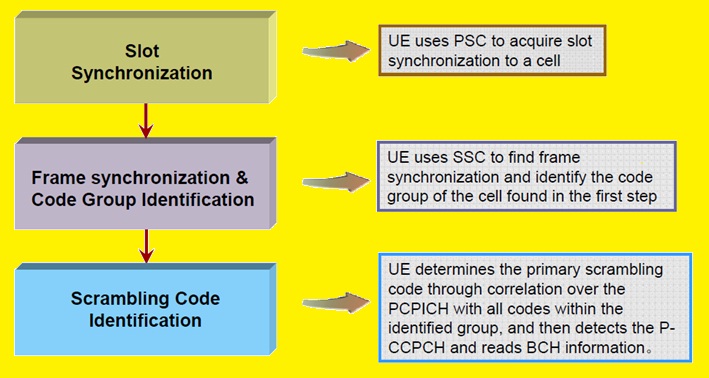Cell Search Procedure purpose is to give the UE the possibility of finding a wcdma cell and of determining the downlink scrambling code and frame synchronization of that wcdma cell. This is typically performed in 3 steps:
PSCH (Slot synchronization): The UE uses the SCH’s primary synchronization code to acquire slot synchronization to a wcdma cell. The primary synchronization code is used by the UE to detect the existence of a cell and to synchronize the mobile on the TS boundaries. This is typically done with a single filter (or any similar device) matched to the primary synchronization code which is common to all wcdma cells. The slot timing of the wcdma cell can be obtained by detecting peaks in the matched filter output.
SSCH (Frame synchronization and code-group identification): The secondary synchronization codes provide the information required to find the frame boundaries and the group number. Each group number corresponds to a unique set of 8 primary scrambling codes. The frame boundary and the group number are provided indirectly by selecting a suite of 15 secondary codes. 16 secondary
codes have been defined C1, C2, ….C16. 64 possible suites have been defined, each suite corresponds to one of the 64 groups. Each suite of secondary codes is composed of 15 secondary codes (chosen in the set of 16), each of which will be transmitted in one time slot. When the received codes matches one of the possible suites, the UE has both determined the frame boundary and the group number.
PCPICH (Scrambling-code identification): The UE determines the exact primary scrambling code used by the found wcdma cell. The primary scrambling code is typically identified through symbol-by-symbol correlation over the PCPICH with all the codes within the code group identified in the second step. After the primary scrambling code has been identified, the Primary CCPCH can be detected and the system- and cell specific BCH information can be read.
